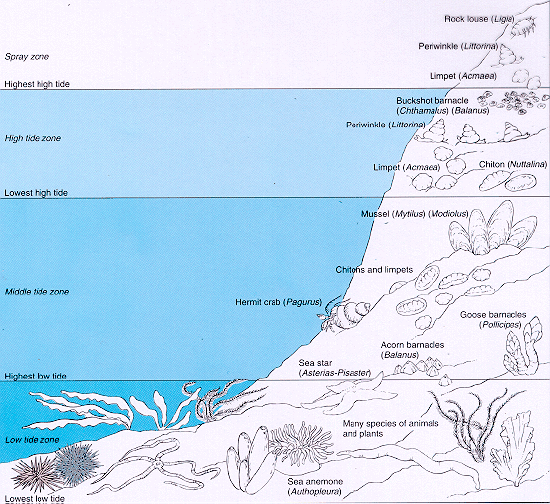79 11.7 Rocky Intertidal Zones

The mid-intertidal zone experiences the most frequent disturbance because it is submerged and exposed while the tide goes out and comes back in. In geographic areas that have semi- or mixed-diurnal tides, such as the western coast of the US, intertidal zones are exposed to two high and two low tides per day. This subjects organisms living in the mid-intertidal zone, including mussels and fucoid algae, to four periods of intense wave action per day. These organisms must develop strong attachment techniques to avoid dislodgment from the rocky shore, which would ultimately lead to death. The low-intertidal zone, the least stressful zone that is submerged in water for the majority of the day, is home to eel grass, sponges, and tunicates. Without the imminent threat of forceful waves, many delicate invertebrates thrive in the low intertidal.
By Hill et al. (University of California, Davis), used under a CC-BY-NC-SA 4.0 international license. Download this book for free at https://geo.libretexts.org/Bookshelves/Oceanography/Book%3A_Oceanography_(Hill)

